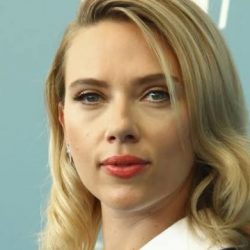What do plant cells produce?
The energy collected in the chloroplasts is used during cellular respiration. During cellular respiration, the energy from the glucose made during photosynthesis is used to produce energy molecules for growth and reproduction. The products of respiration are energy molecules, carbon dioxide and water.
Where do plant cells make food?
Chloroplasts
Chloroplasts are the food producers of the cell. The organelles are only found in plant cells and some protists such as algae.
Can plant cells make their own food?
plant cells make their own food by taking in carbon dioxide (Co2) in the presence of sunlight. They need water also. this process is called photosynthesis.
How does a plant cell function?
Plant Cell Functions Plant cells are the building blocks of plants. Photosynthesis is the major function performed by plant cells. Photosynthesis occurs in the chloroplasts of the plant cell. A few plant cells help in the transport of water and nutrients from the roots and leaves to different parts of the plants.
What is inside a plant cell?
Plant cells are eukaryotic, which means that they contain a distinct nucleus. Plant cells have three unique structures which set them apart from other eukaryotes, such as animal cells: the cell wall, plastids, and vacuoles.
Why are animal cells unable to make their own food?
Plants photosynthesis which means they make their own food through sunlight to drive chemical reactions to produce sugars. Plants are producers which means animals are consumers, animals can’t make their own food because they lack chlorophyll and they have no chloroplasts in their cells like plants do.
Why do plants need to make their own food?
The leaves contain a pigment called chlorophyll, which colors the leaves green. Chlorophyll can make food the plant can use from carbon dioxide, water, nutrients, and energy from sunlight. This process is called photosynthesis. During the process of photosynthesis, plants release oxygen into the air.
How does a plant absorb carbon dioxide?
Plants use photosynthesis to capture carbon dioxide and then release half of it into the atmosphere through respiration. Plants also release oxygen into the atmosphere through photosynthesis.
How does a plant cell look like?
Plant cells are eukaryotic cells or cells with a membrane-bound nucleus. While animal cells come in various sizes and tend to have irregular shapes, plant cells are more similar in size and are typically rectangular or cube shaped. A plant cell also contains structures not found in an animal cell.
How long do plant cells live?
The life of a plant cell depends largely on the plant organism that the cell belongs to. Some plant organisms only live a few months to a year, such…
Do animal cells need sunlight?
There are really only two ways to get food. A cell can make its own food or get it from somewhere else. Animal cells must take food in from some other source. In essence, the plant cell uses the energy in sunlight to combine carbon dioxide and water to make molecules of glucose and to release oxygen.
Why are animal cells unable to?
Why do only leaves make food?
Plants make food in their leaves. The leaves contain a pigment called chlorophyll, which colors the leaves green. Chlorophyll can make food the plant can use from carbon dioxide, water, nutrients, and energy from sunlight. This process is called photosynthesis.
How much carbon dioxide does a plant absorb in a day?
One plant can absorb just 0.0000019 kg of CO2 in 24 hours – 0.10%.
Do plants take in oxygen?
Most folks have learned that plants take up carbon dioxide from the air (to be used in photosynthesis) and produce oxygen (as a by-product of that process), but less well known is that plants also need oxygen. Plants, like animals, have active metabolisms, fueling all bodily activities.
What are 3 main differences between plant and animal cells?
Major structural differences between a plant and an animal cell include:
- Plant cells have a cell wall, but animals cells do not.
- Plant cells have chloroplasts, but animal cells do not.
- Plant cells usually have one or more large vacuole(s), while animal cells have smaller vacuoles, if any are present.
Which plant lives the longest?
Bristlecone Pines (Pinus Longaeva), Yew trees, and Ginkgo Biloba trees appear to be the longest lived on record. They are commonly found in climates that are subject to change drastically.
Do plants die of old age?
All plants die eventually. Unlike animals, plants do not have a set age or size where they are considered “mature” or even “old.” Plants have “indeterminate growth.” If conditions are right, they just keeping growing with almost no limitations.
What is the difference between a plant and an animal cell?
Major structural differences between a plant and an animal cell include: Plant cells have a cell wall, but animals cells do not. Chloroplasts enable plants to perform photosynthesis to make food. Plant cells usually have one or more large vacuole(s), while animal cells have smaller vacuoles, if any are present.
Chloroplasts are the food producers of the cell. The organelles are only found in plant cells and some protists such as algae.
Is sugar the food that plants make?
Plants use a process called photosynthesis to make food. During photosynthesis, plants trap light energy with their leaves. Plants use the energy of the sun to change water and carbon dioxide into a sugar called glucose. Glucose is used by plants for energy and to make other substances like cellulose and starch.
What plant does sugar come from?
Sugar is made in the leaves of the sugarcane plant through photosynthesis and stored as a sweet juice in sugarcane stalks. Sugarcane is cut down and harvested then sent to a factory. At the factory, cane juice is extracted, purified, filtered and crystalized into golden, raw sugar.
Do plants need oxygen?
The two primary reasons plants need is air to photosynthesize (make food) and to breathe. Plants need to breathe for the same reason people and animals must breathe – they need oxygen to convert food into energy. The relationship between air and indoor plants is crucial to keeping your plants looking their best.
What are animals that Cannot make their own food called?
Animals cannot make their own food so they must eat plants and/or other animals. They are called consumers. There are three groups of consumers.
How are the cells of a plant able to make food?
Plant cells contain special structures called chloroplasts, which contain a special green pigment called chlorophyll. The choloroplasts create food in the form of sugar for energy (as well as oxygen) from their surrounding environment.
What do plant use to make food?
What can I use to make a plant cell?
Create the plant cell model with cupcakes. Fill a pan or box with cupcakes. Ice them to form one smooth surface. Remove one cupcake and substitute an apple for the nucleus. Surround the cupcakes with a membrane made from fruit ribbons. For each item in the plant cell, remove a cupcake and replace with another edible treat.
Where do plants store the food they produce?
The secret ingredient to plant food production is chlorophyll, located in the chloroplasts, found in the leaves. Through photosynthesis, chlorophyll helps convert water, sunlight, and carbon dioxide captured by chloroplasts into sugars to be used immediately or stored.
How do plants cells make their own food?
– Plants mostly store their food sources in their roots. – Plants generate their own food through photosynthesis. – The survival of most living species is reliant on plants.
Which part of a plant cell makes food?
What Part of a Plant Makes Its Food? Photosynthesis. Photosynthesis is the process plants use to make food. Xylem. Xylem are specialized cells that carry the water from the roots of the plants up through the stems and into the leaves. Stomates. Marine Plants. Fun Fact.
What does a plant cell store food as?
Plastids are double-membrane organelles which are found in the cells of plants and algae. Plastids are responsible for manufacturing and storing of food. These often contain pigments that are used in photosynthesis and different types of pigments that can change the colour of the cell.
Which organelle helps plant cells make their own food?
Chloroplasts are probably the most important organelle on Earth. Not only do they help plants make food (and so put plants at the base of almost all food chains) but they also release most of the oxygen we breathe. Chloroplasts are the engines for photosynthesis.






